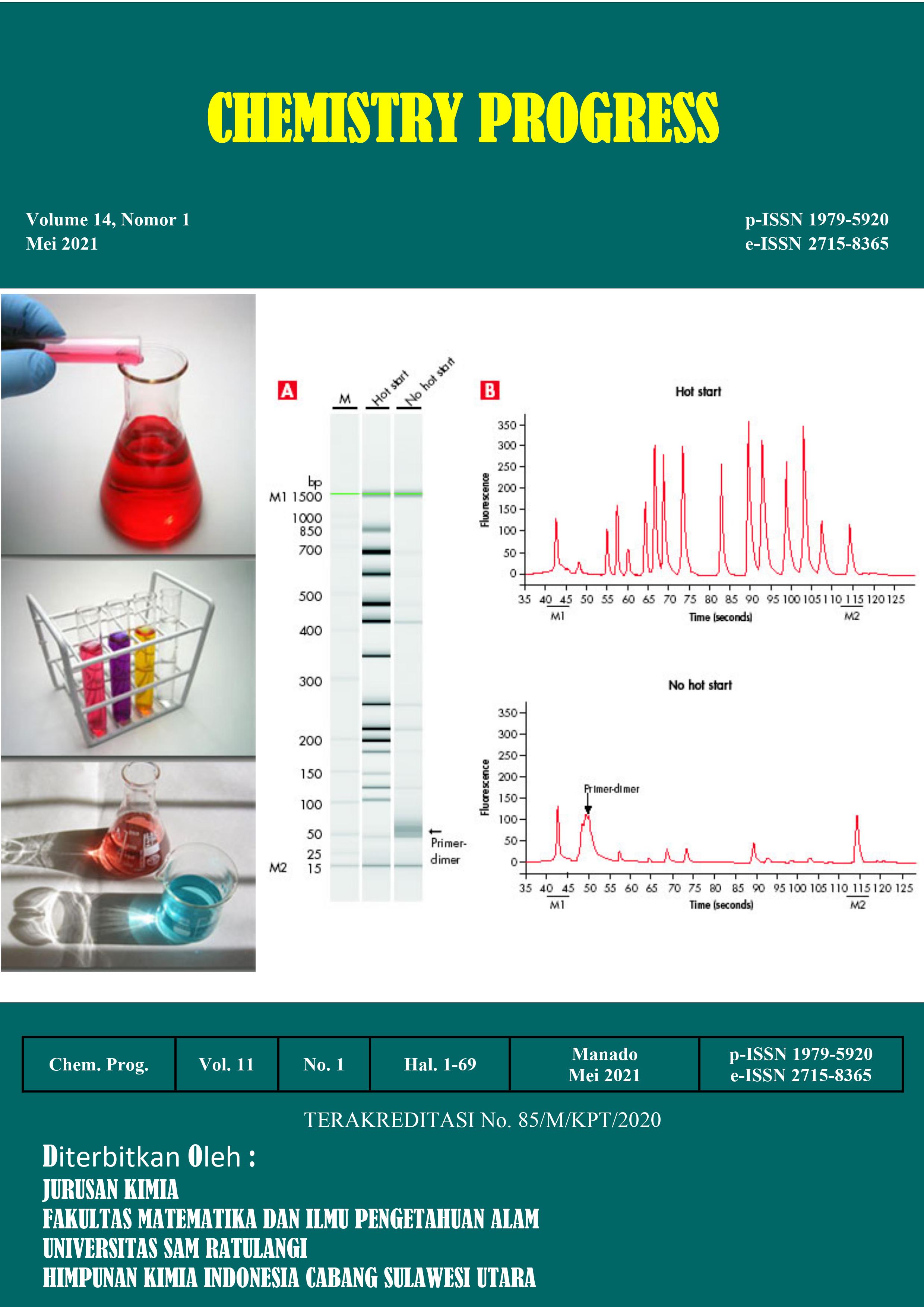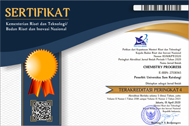KARAKTERISASI DAN AKTIVITAS ANTIOKSIDAN SERAT PANGAN DARI TEPUNG KULIT LEMON CUI (Citrus microcarpa)
DOI:
https://doi.org/10.35799/cp.14.1.2021.34129Keywords:
Antioksidan, serat pangan, ekstrak fenolik, tepung kulit lemon cuiAbstract
Tujuan dari penelitian ini untuk mengekstraksi dan mengkarakterisasi antioksidan serat pangan dari kulit lemon cui (Citrus microcarpa) dengan perbedaan pelarut menggunakan gelombang ultrasonik. Hasil penelitian menunjukkan bahwa tepung kulit lemon cui yang diekstraksi dengan perbedaan pelarut tidak mengalami perubahan mendasar pada komponen utama ditunjukkan pada hasil spectra Fourier Transfrom Infra Red (FT-IR). Karakterisasi secara kimia menunjukkan TPKLC memiliki kandungan air (8,49%), abu (4,44%), lemak (0,8%), protein (12,45%), dan karbohidrat (73,99%). AKLC mengandung air (1,71%), abu (4,41%), lemak (0,56%), protein (10,56%), karbohidrat (82,76%). EKLC mengandung air (7,88%), abu (6,18%), lemak (1,04%), protein (7,68%), karbohidrat (77,22%). Hasil pengujian aktivitas antioksidan menunjukkan bahwa ekstrak fenolik EKLC (96,48%) tertinggi diikuti oleh ekstrak fenolik AKLC (95,45%), dan ekstrak fenolik TPKLC (94,29%).Hasil penelitian ini menunjukkan bahwa dengan pelarut etanol dapat meningkatkan aktivitas antioksidan dibanding dengan pelarut aquades.
ABSTRACT
Objective of this study to extract and characterize antioxidant dietary fiber from lemon peel cui (Citrusmicrocarpa)with different solvents using wave ultrasonic. The results showed that the lemon cui peel powder extracted with different solvents did not experience a fundamental change in the main component as shown in the results of the Fourier Transfrom Infra Red (FT-IR) spectra. Chemical characterization showed that TPKLC contained water (8.49%), ash (4.44%), fat (0.8%), protein (12.45%), and carbohydrates (73.99%). AKLC contains water (1.71%), ash (4.41%), fat (0.56%), protein (10.56%), carbohydrates (82.76%). EKLC contains water (7.88%), ash (6.18%), fat (1.04%), protein (7.68%), carbohydrates (77.22%). The results of the antioxidant activity test showed that the highest EKLC phenolic extract (96.48%) was followed by AKLC phenolic extract (95.45%), and TPKLC phenolic extract (94.29%). The results of this study indicate that ethanol solvent can increase antioxidant activity compared to distilled water solvent.













